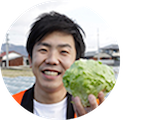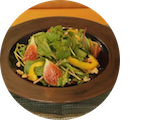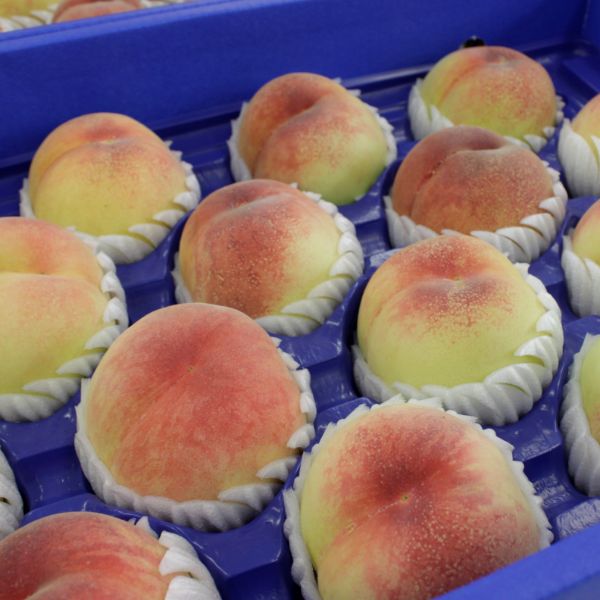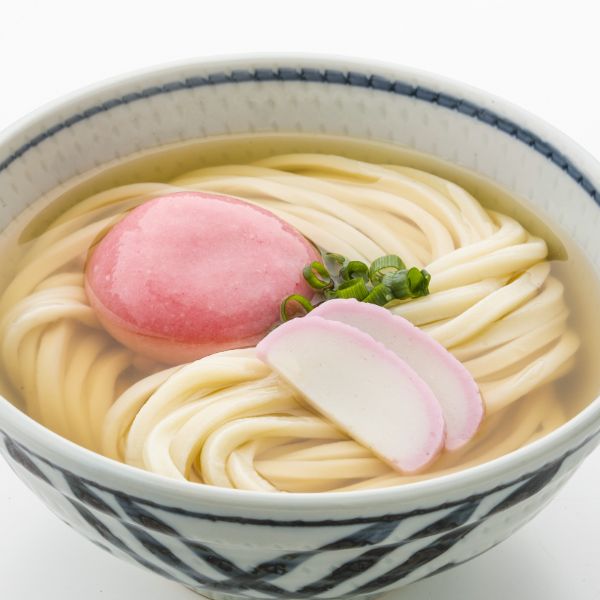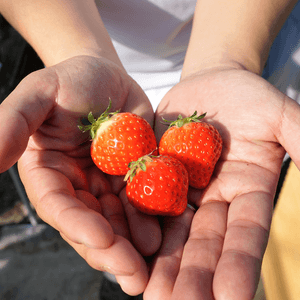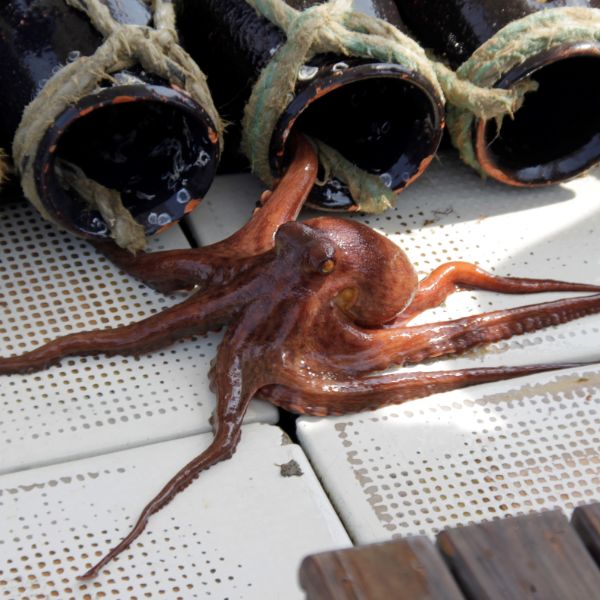LOVE Sanuki's report
The 75th Sanuki Gyoza
One of the major projects of Yoshimoto, "A project to live in your town", to make Japan feel good from the area. Entertainer "Kaji Tsuyoshi" who lives in Kagawa reports on local products.
reporter

KAJI Tsuyoshi
NSC Osaka school 22nd grade
2005 Formed "Katsuyama Kaji" with Moody Katsuyama
2008 ABC Comedy Newcomer Grand Prix Newcomer Award
2010 Active as a pin entertainer
Birthplace: Mitoyo City, Kagawa Prefecture Born March 1981, 3
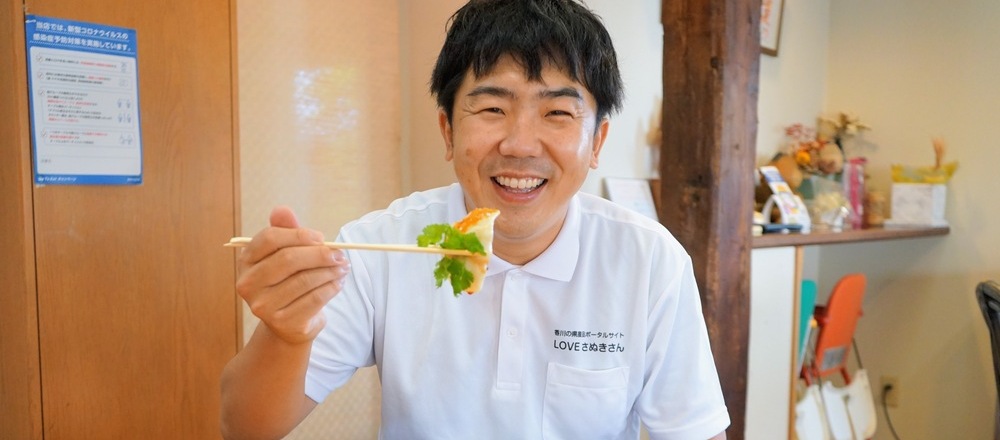
In 2020, "Sanuki Gyoza" was born as a new local gourmet in Kagawa Prefecture.
Sanuki dumplings are dumplings unique to Kagawa Prefecture, which are wrapped in olive pork (ton) and locally produced vegetables in skins made from ``Sanuki no Yume'' wheat flour developed for Sanuki udon noodles.
Mr. Kaji visited three Sanuki gyoza restaurants: “Chinese Cuisine Beijing,” “China Yangtze River Yusakoten,” and “Chinese Cuisine Saien.”
-
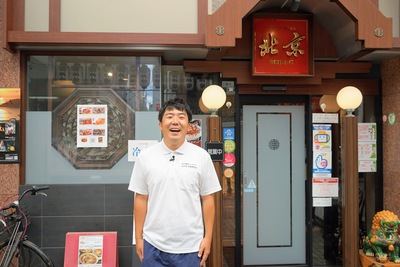
Make everyone smile and cheer up!Birth of Kagawa's New Local Gourmet "Sanuki Gyoza"
The first restaurant is Chinese restaurant Pekin in Kataharamachi, Takamatsu City.
Chef Kazuto Nakai told us how Sanuki gyoza was born.
Sanuki gyoza was born in 2020, just as the new coronavirus spread and restaurants were affected. -
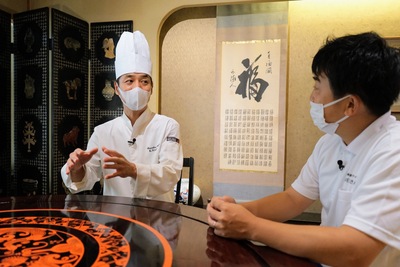
While restaurants were depressed, Mr. Nakai and other volunteers from the Kagawa Prefecture Chinese Food Sanitation Industry Association started activities to revitalize Kagawa through food, with the theme of dumplings packed with ingredients from Kagawa Prefecture.
If the number of shops that make Sanuki dumplings increases, the number of ingredients from Kagawa will also increase.Mr. Nakai says that he hopes it will help the producers to get better, even if it is just a little. -
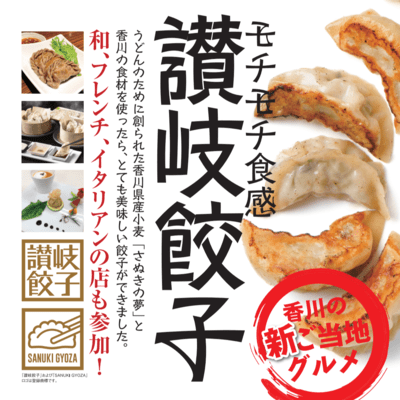
“Through food, everyone is connected and everyone smiles. That is the origin of Sanuki gyoza,” said Mr. Kaji, who was moved by the story of how Sanuki gyoza was born.
Mr. Nakai's dream is to make it the third local gourmet following "Sanuki udon" and "Honetsukidori". -
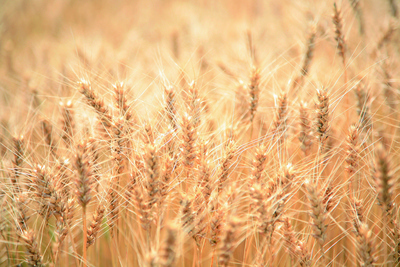
Sanuki dumplings must be made with flour from Sanuki no Yume
The first requirement for Sanuki gyoza is to use flour from Sanuki no Yume for the skin.Sanuki no Yume is wheat from Kagawa prefecture developed for Sanuki udon.
“When developing Sanuki gyoza, we started by inviting people from a flour milling company to study wheat flour,” recalls Mr. Nakai. -
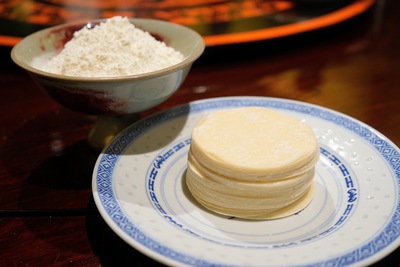
There are three types of flour: hard flour, all-purpose flour, and soft flour.Strong flour is the most sticky, and weak flour is less sticky.Since it is originally made from wheat for Sanuki udon, it has the property of being sticky and slippery.
-
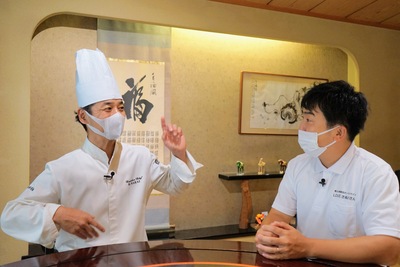
Some chefs use 100% Sanuki no Yume flour to make the crust, while others blend it with strong flour to create a chewy texture.One of the charms of Sanuki gyoza is that you can taste and compare gyoza made by the chefs of each restaurant.
It seems that the interest of customers is increasing by using flour for Sanuki udon.
▼ Related links
Sanuki no Yume
-
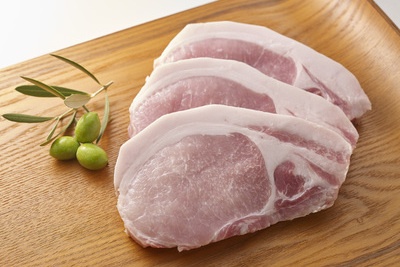
Sanuki dumplings are also made with ingredients from Kagawa prefecture.
It is a rule to use one type of ingredients from Kagawa Prefecture for the ingredients of Sanuki gyoza.
There are also shops that use local fish such as Kagawa's brand "Olive Pork" and "Olive Chicken".
“Kagawa Prefecture is rich in seafood and mountain produce, and many varieties of vegetables are cultivated. It is a pleasure to wrap them in gyoza and serve them,” says Mr. Nakai.
In 2021, the circle of Sanuki gyoza is expanding, with an Italian chef devising Sanuki gyoza from an Italian perspective and a Japanese chef devising Sanuki gyoza from a Japanese perspective.
▼ Related links
Olive Yumebuta / Olive Ton
Olive chicken
-
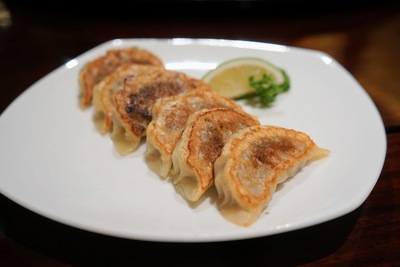
Chinese Cuisine Beijing's "Setouchi Lemon Dumplings"
Mr. Kaji tasted Chinese cuisine Beijing's Sanuki gyoza "Setouchi Lemon Gyoza".
Setouchi Lemon Gyoza is a gyoza dumpling made by wrapping minced olive pork, lemons, onions, and Chinese chives from Kagawa Prefecture in a skin made from Sanuki's dream. -
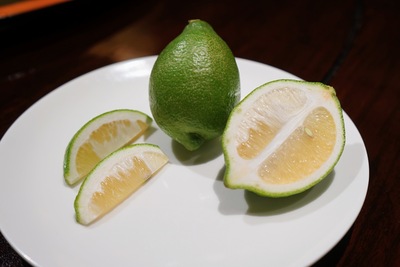
“First of all, please eat it as it is without dipping it in any sauce,” says Mr. Nakai.
"It's good. It smells like lemon and you can feel the wind of Setouchi. The meat is refreshing and delicious."
Mr. Nakai got a hint from Western cuisine that makes use of lemon peel in cooking, and kneaded lemon peel into gyoza ingredients.That is the point of the Setouchi style, where the ingredients are fragrant.
It doesn't use garlic, so it's easy to eat, and it's also recommended for those who are concerned about odors. -
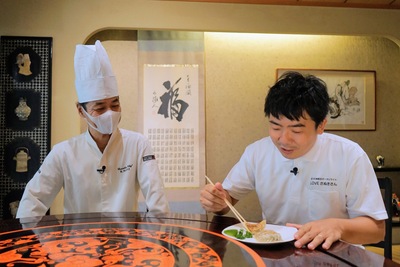
Next, I squeezed the lemon that came with it.
“A little while ago, I could feel the lemon floating in the ingredients, but the moment I put it in my mouth, it was wrapped in lemon.” Kaji seems to have felt the wind of Setouchi even more.The umami of olive pork is tightly concentrated and satisfying.
"I think this gyoza has a new sensation, with the fragrant and chewy skin and the sourness of the Setouchi lemon."
Chinese Cuisine Pekin Honkan
-
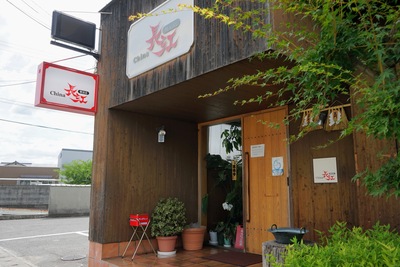
"Red Oil Dumplings" from Yangtze River, China
The second store is China Nagae Yanagisakoten in Kosaihonmachi, Takamatsu City.
The owner, Mr. Tsutomu Yanagisako, prepared Sanuki gyoza "Honyu Suijao". "Red oil" means chili oil. -
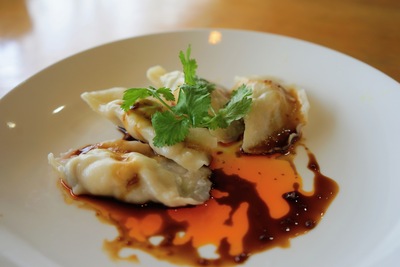
“Please eat it while it is still warm,” said Mr. Yanagisako.
"This is delicious. The dumpling skin is thick and chewy, and it tastes like wheat."
In Japan, dumplings with plenty of ingredients in a thin skin are the mainstream, but in China, where gyoza is a staple food, a small amount of ingredients is placed in a thick skin and the skin is used to fill the stomach, says Mr. Yanagisako. gave me -
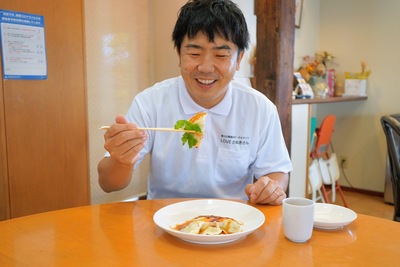
The dark sauce that is put on the gyoza is a sauce unique to Sichuan cuisine called sweet soy sauce.Unpairo is a sauce made by thinly shaving boiled pork, and is applied to Sanuki dumplings.Rock sugar and soy sauce, cinnamon, star anise, mandarin orange peel, green onion, and ginger are added to it, and boiled over low heat for 2 hours while removing the scum.
-
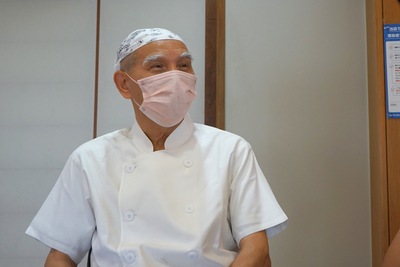
Kaji also pays attention to chili oil.
"The chili oil on gyoza is spicy, but it's completely different from commercially available chili oil."
Mr. Yanagisako says that chili oil is originally spicy and sweet.
Red pepper powder is used for chili oil, but chili peppers are vegetables in the same group as bell peppers and paprika.Just like bell peppers and paprika become sweeter when they ripen and turn red, chili peppers are green at first, but become sweeter when they ripen and turn red.If you put the spices in the cold oil, light it, and raise the temperature until the green onions turn black, the aroma of the spices will come out. -
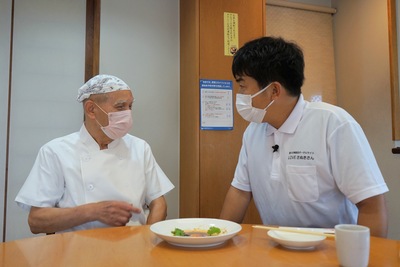
Mr. Yanagisako, who has been making gyoza dumplings for many years, also had a hard time making skins using Sanuki no Yume.
In order not to make it too chewy, we adjusted the blend of Sanuki no Yume and strong flour and repeated trial productions to create a moderately chewy texture.
When participating in Sanuki Gyoza, Mr. Yanagisako did not want to create a new taste, but wanted to convey the taste that he had been making until now.Red oil boiled dumplings carefully convey the taste of traditional Chinese cuisine while using ingredients from Kagawa Prefecture.
China Yangtze River Yusako
-
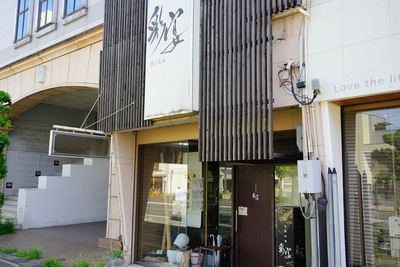
"Sanuki Boiled Gyoza Sichuan Style Sauce" by Chinese Restaurant Saien
The third restaurant is Saien, a Chinese restaurant in Shionokami-cho, Takamatsu City.
The owner, Mr. Ryota Hasegawa, prepared Sanuki Gyoza "Sanuki no Boiled Gyoza Sichuan Style Sauce". -
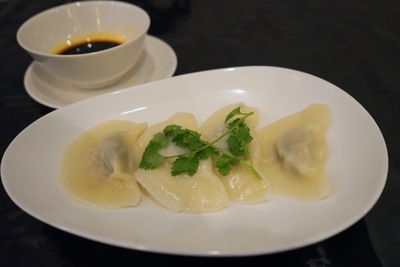
Mr. Kaji immediately ate the piping hot Sanuki dumplings.
“This is delicious.
Mr. Hasegawa makes leather by hand at 100% Sanuki no Yume.Even among Sanuki gyoza restaurants, it is rare to find a shop that uses 100% Sanuki no Yume to make gyoza by hand.Olive pork wrapped with Chinese cabbage and garlic chives. -
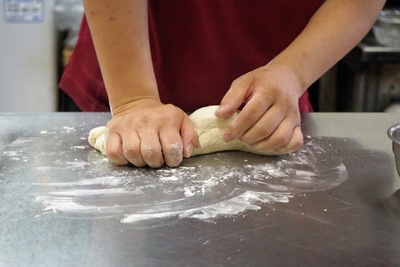
In order to create a springy texture and elasticity like udon noodles, we went through a lot of trial and error on the amount of salt and water to add, and on how to knead the dough, and finally arrived at the skin we have today.
“For me, I thought it would be different to say that Sanuki gyoza is just a small part of Sanuki’s dream. I was. -
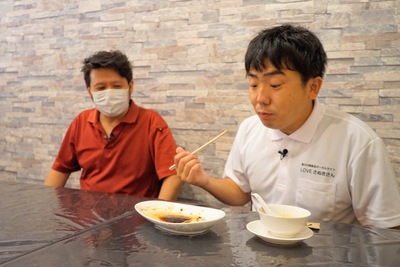
The sauce for Sanuki gyoza was also researched for Sanuki gyoza.It is a spicy sauce made with chili oil based on black vinegar and soy sauce.
“There are repeat customers who order Sanuki dumplings every time they visit,” says Hasegawa with a smile.
“The texture is familiar to people in Kagawa, but I would like people outside the prefecture to eat it,” said Mr. Kaji, who was very satisfied with the taste.
Chinese cuisine Saiban
-
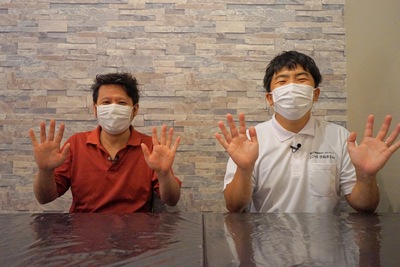
Mr. Kaji tasted Sanuki dumplings at each of the three restaurants.There are still unique Sanuki gyoza shops.Mr. Kaji gave his stamp of approval for the deliciousness of Sanuki gyoza, wanting people from Kagawa Prefecture and outside the prefecture to try it.
-
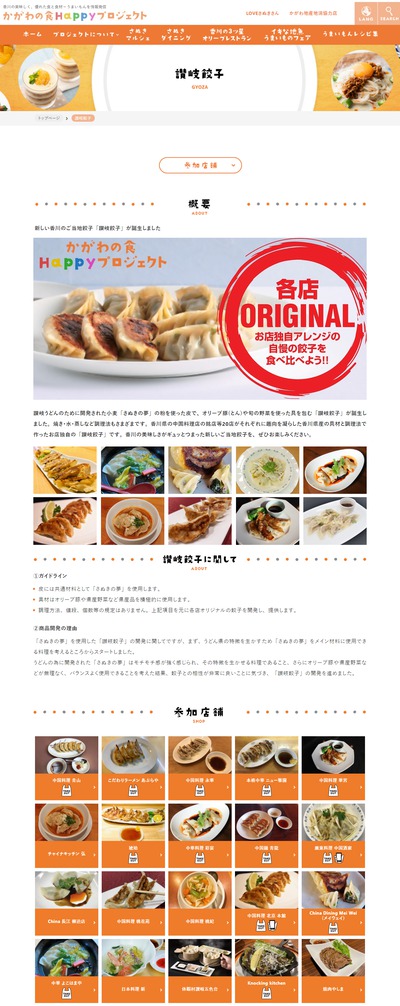
Participating stores of "Sanuki gyoza" are introduced here.
Sanuki dumplings
"Sanuki Gyoza" Participating Stores
Chinese food Aoyama
Discerning ramen Aburaya
Chinese food Yonghua
Authentic Chinese New Yaen
Chinese Restaurant Kakyu
China Kitchen Hiroshi
amber
Chinese cuisine Saiban
Chinese noodles Seiryu
Hiroto Cuisine Chinese Sake House
China Yangtze River Yanagisako
Chinese cuisine Tokaen
Chinese food Momoki
Chinese Cuisine Pekin Honkan
China Dining Mei Wei
Chinese yokohamatei
Japanese cuisine new
Kyukamura Sanuki Goshikidai
knocking kitchen
Yakiniku Yamashima
















 Olive products from Kagawa Prefecture
Olive products from Kagawa Prefecture



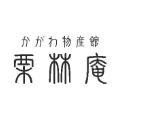
 Stores handling olive-related products
Stores handling olive-related products
